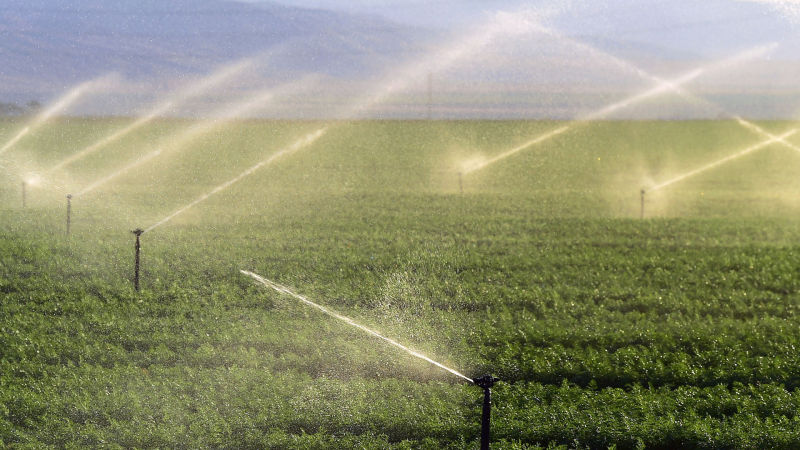Agriculture consumes about 40 percent of the state’s water, or 80 percent of water available for human use. Critics question the viability of growing water-intensive crops like almonds and rice, but others argue the state’s water woes are too complex to pin on a single industry. In the first installment of Forum’s Drought Watch series, we look at agriculture’s water consumption and conservation practices, and how the industry may need to adapt to a hotter and drier climate.
Show Highlights
On the Debate Over How Much Water Ag Uses
"If you ask 'Of all the water that falls on California, how much of that is that used in agriculture?' The answer is 40 percent. That's just arithmetic — it's just how much is used in agriculture, how much falls on the state. I don't dispute that if you take some of that water and say 'Well, we're not going to count it.' In his last sentence the congressman no longer said 'water' he said 'developed water.' Well, now we can quibble about what we mean by 'developed.'
"When you and I were kids, Michael, the water that we now say is used for 'environment' we used to call 'wasted.' We didn't even count it. And so for years and years we used the figure 80 percent to describe agricultural water because we were only counting half the water in the state. Now, I agree immediately — is there some water maybe we won't count because nobody's ever going to get access to use it very much. If you go to the far north corner of California [there are] incredible amounts of water and we're not going to pump that either to Marin County or into the Sacramento Valley — it's over a mountain range, it's too hard to use. We also value that water. Anybody who's ever been up to that part of the world — it's wonderful, partly because there's so much water that's completely untamed rushing out to the Pacific. Do we ignore that and call that 'not water'? For some purposes.
"But I wouldn't want to politicize those numbers. It really is the case that we now — you and I and everybody else in California — we don't call swamps 'swamps' we call them 'wetlands.' We really value that water that's running to the sea and that's why I think it's appropriate to count it. We do know how much water goes into agriculture, roughly, and we know what we use in urban and there's no question most of the developed actively-used water by humans in California goes to agriculture." – Dan Sumner
